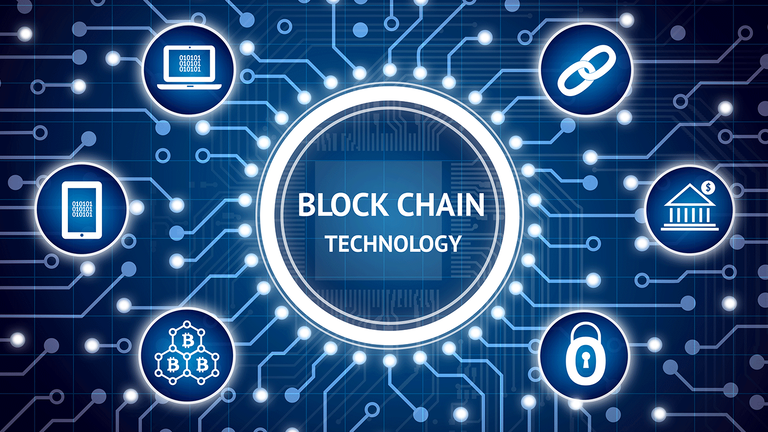
Blockchain has been primarily associated with the financial industry and cryptocurrency, but it has also been used for various other applications in several industries including healthcare, supply chain management, asset tracking, energy management, smart home/city and Internet of Things (IoT).
What other ways can Blockchain be used throughout the Web to expand usability?
What Is a Blockchain?
The idea of a blockchain was first invented to use as the mechanism supporting Bitcoin. To solve the double-spending problem associated with digital currencies, Satoshi Nakamoto devised an immutable ledger of transactions that chains together blocks of data using digital cryptography.
A blockchain is a distributed database that is shared among the nodes of a computer network. As a database, a blockchain stores information electronically in digital format. Blockchains are best known for their crucial role in cryptocurrency systems, such as Bitcoin, for maintaining a secure and decentralized record of transactions. The innovation with a blockchain is that it guarantees the fidelity and security of a record of data and generates trust without the need for a trusted third party.
Although it’s typically thought of being used for something investment related, with very high value, there are many things that can take advantage of a “secure and decentralized record of transactions”.
One key difference between a typical database and a blockchain is how the data is structured. A blockchain collects information together in groups, known as blocks, that hold sets of information. Blocks have certain storage capacities and, when filled, are closed and linked to the previously filled block, forming a chain of data known as the blockchain.
A database usually structures its data into tables, whereas a blockchain, like its name implies, structures its data into chunks (blocks) that are strung together. This data structure inherently makes an irreversible timeline of data when implemented in a decentralized nature. When a block is filled, it is set in stone and becomes a part of this timeline. Each block in the chain is given an exact time stamp when it is added to the chain.
While the idea works extremely well for Bitcoin and other cryptocurrencies, there are loads of other useful applications of blockchain technology.
Basics of Blockchain
- Blockchain is a type of shared database that differs from a typical database in the way that it stores information; blockchains store data in blocks that are then linked together via cryptography.
- As new data comes in, it is entered into a fresh block. Once the block is filled with data, it is chained onto the previous block, which makes the data chained together in chronological order.
- Different types of information can be stored on a blockchain, but the most common use so far has been as a ledger for transactions.
- In Bitcoin’s case, blockchain is used in a decentralized way so that no single person or group has control—rather, all users collectively retain control.
- Decentralized blockchains are immutable, which means that the data entered is irreversible. For Bitcoin, this means that transactions are permanently recorded and viewable to anyone.
How Does a Blockchain Work?
The goal of blockchain is to allow digital information to be recorded and distributed, but not edited. In this way, a blockchain is the foundation for immutable ledgers, or records of transactions that cannot be altered, deleted, or destroyed. This is why blockchains are also known as a distributed ledger technology (DLT).
First proposed as a research project in 1991, the blockchain concept predated its first widespread application in use: Bitcoin, in 2009. In the years since, the use of blockchains has exploded via the creation of various cryptocurrencies, decentralized finance (DeFi) applications, non-fungible tokens (NFTs), and smart contracts.
Why Decentralization Is So Important
Imagine that a company owns a server farm with 1,000 computers used to maintain company files holding all of its client’s account information. This company stores these computers in a warehouse building under one roof and has full control of each of these computers and all of the information contained within them. This, however, provides a single point of failure. What happens if the electricity at that location goes out? What if there’s an earthquake? What if a person breaks into the network and deletes everything? In any case, the data is lost or corrupted.
What a blockchain does is to allow the data held in that database to be spread out among several network nodes at various locations. This not only creates redundancy but also maintains the fidelity of the data stored therein—if somebody tries to alter a record at one instance of the database, the other nodes would not be altered and thus would prevent a bad actor from doing so. If one user tampers with Bitcoin’s record of transactions, all other nodes would cross-reference each other and easily pinpoint the node with the incorrect information.
Because of this, the information and history (such as of transactions of a Bitcoin) are irreversible. Such a record could be a list of transactions (such as with a cryptocurrency), but it also is possible for a blockchain to hold a variety of other information like legal contracts, state identifications, or a company’s product inventory. The possibilities are endless.
Transparency
Because of the decentralized nature of Bitcoin’s blockchain, all transactions can be transparently viewed by either having a personal node or using blockchain explorers that allow anyone to see transactions occurring live.
Is Blockchain Secure?
Extremely.
Blockchain technology achieves decentralized security and trust in several ways. To begin with, new blocks are always stored linearly and chronologically. That is, they are always added to the “end” of the blockchain. Therefore, there is an interdependency. After a block has been added to the end of the blockchain, it is extremely difficult to go back and alter the contents of the block unless a majority of the network has reached a consensus to do so. That’s because each block contains its own hash, along with the hash of the block before it, as well as the previously mentioned time stamp. Hash codes are created by a mathematical function that turns digital information into a string of numbers and letters. If that information is edited in any way, then the hash code changes as well.
If a hacker, who also runs a node on a blockchain network, wants to alter a blockchain and steal cryptocurrency from everyone else, and they altered their own single copy, it would no longer align with everyone else’s copy. So, in order to get away with this the hacker would have to change at least 51% of all other copies of the blockchain. Doing this would be virtually impossible due to the number of blockchain nodes, and growing quickly.
Peer-to-Peer Networks are Nothing New
The idea of a peer-to-peer system is nothing new. It’s most prominent use was in the music industry. The first wave of networks came in the form of Napster and other file sharing programs. While it was built on a peer-to-peer system, Napster was different from how we commonly think of blockchain today. Napster’s network was not entirely decentralized. Users would request a song on Napster’s host server which would process requests for a given file. The server served as an index for all files uploaded by other Napster users. Napster’s server would then give the requesting party those computers that had the file and the requesting party would then download the file of the computer. While peer-to-peer networks once pained many, it may soon become a very useful tool to many in the music industry – beginning with copyright holders.
The diffusion of blockchain-based technology into the music industry would provide enormous financial and legal benefits for musicians, copyright holders, and service providers alike. As blockchain has become much more prominent, many industries are eager to see how they might be able to adopt the technology. The music industry ought to be at the forefront of blockchain integration.
The transparent nature of a blockchain would mean that music placed on the blockchain would be immutable. This could prove to be extremely useful for artists in combatting piracy.
Other Blockchain Possibilities or Currently Underway
Internet Services
Traditional Internet infrastructure relies on centralized services, which can sometimes compromise user data and privacy. A number of new projects are trying to establish a decentralized, blockchain-based Internet alternative that replaces centralized intermediaries with peer-to-peer service providers.
The Internet is constantly under surveillance, and user data is regularly tracked and collated by corporations, application developers, and governments. A blockchain-based alternative can address this problem by replacing Internet giants with a decentralized, peer-to-peer network of providers.
In such an alternative, members of the community would own and operate the infrastructure used for storage and computing. This would take away control from government or corporate bodies, and ensure net neutrality.
This form of the Internet is also hoped to ensure data security.
Money transfers
The original concept behind the invention of blockchain technology is still a great application. Money transfers using blockchain can be less expensive and faster than using existing money transfer services. This is especially true of cross-border transactions, which are often slow and expensive. Even in the modern U.S. financial system, money transfers between accounts can take days, while a blockchain transaction takes minutes.
Lending
Lenders can use blockchain to execute collateralized loans through smart contracts. Smart contracts built on the blockchain allow certain events to automatically trigger things like a service payment, a margin call, full repayment of the loan, and release of collateral. As a result, loan processing is faster and less expensive, and lenders can offer better rates.
Insurance
Using smart contracts on a blockchain can provide greater transparency for customers and insurance providers. Recording all claims on a blockchain would keep customers from making duplicate claims for the same event. Furthermore, using smart contracts can speed up the process for claimants to receive payments.
Real estate
Real estate transactions require a ton of paperwork to verify financial information and ownership and then transfer deeds and titles to new owners. Using blockchain technology to record real estate transactions can provide a more secure and accessible means of verifying and transferring ownership. That can speed up transactions, reduce paperwork, and save money.
Secure personal information
Keeping data such as your Social Security number, date of birth, and other identifying information on a public ledger (e.g., a blockchain) may actually be more secure than current systems more susceptible to hacks. Blockchain technology can be used to secure access to identifying information while improving access for those who need it in industries such as travel, healthcare, finance, and education.
Voting
If personal identity information is held on a blockchain, that puts us just one step away from also being able to vote using blockchain technology. Using blockchain technology can make sure that nobody votes twice, only eligible voters are able to vote, and votes cannot be tampered with. What’s more, it can increase access to voting by making it as simple as pressing a few buttons on your smartphone. At the same time, the cost of running an election would substantially decrease.
Government benefits
Another way to use digital identities stored on a blockchain is for the administration of government benefits such as welfare programs, Social Security, and Medicare. Using blockchain technology could reduce fraud and the costs of operations. Meanwhile, beneficiaries can receive funds more quickly through digital disbursement on the blockchain.
Securely share medical information
Keeping medical records on a blockchain can allow doctors and medical professionals to obtain accurate and up-to-date information on their patients. That can ensure that patients seeing multiple doctors get the best care possible. It can also speed up the system for pulling medical records, allowing for more timely treatment in some cases. And, if insurance information is held in the database, doctors can easily verify whether a patient is insured and their treatment is covered.
Non-fungible tokens
Non-fungible tokens, or NFTs, are commonly thought of as ways to own the rights to digital art. Since the blockchain prevents data from existing in two places, putting an NFT on the blockchain guarantees that only a single copy of a piece of digital art exists. That can make it like investing in physical art but without the drawbacks of storage and maintenance.
Logistics and supply chain tracking
Using blockchain technology to track items as they move through a logistics or supply chain network can provide several advantages. First of all, it provides greater ease of communication between partners since data is available on a secure public ledger. Second, it provides greater security and data integrity since the data on the blockchain can’t be altered. That means logistics and supply chain partners can work together more easily with greater trust that the data they’re provided is accurate and up to date.
Secure Internet of Things networks
The Internet of Things (IoT) is making our lives easier, but it’s also opening the door for nefarious actors to access our data or take control of important systems. Blockchain technology can provide greater security by storing passwords and other data on a decentralized network instead of a centralized server. Additionally, it offers protection against data tampering since a blockchain is practically immutable.
Data storage
Adding blockchain technology to a data storage solution can provide greater security and integrity. Since data can be stored in a decentralized manner, it will be more difficult to hack into and wipe out all the data on the network, whereas a centralized data storage provider may only have a few points of redundancy. It also means greater access to data since access isn’t necessarily reliant on the operations of a single company. In some cases, using blockchain for data storage may also be less expensive.
Gambling
The gambling industry can use blockchain to provide several benefits to players. One of the biggest benefits of operating a casino on the blockchain is the transparency it provides to potential gamblers. Since every transaction is recorded on the blockchain, bettors can see that the games are fair and the casino pays out. Furthermore, by using blockchain, there’s no need to provide personal information, including a bank account, which may be a hurdle for some would-be gamblers. It also provides a workaround for regulatory restrictions since players can gamble anonymously and the decentralized network isn’t susceptible to government shutdown.
Where From Here?
Once the use of Blockchain technology is understood more and rightfully trusted the possibilities are endless.
Excerpts taken from:
Investopedia.com
Motley Fool – Fool.com




